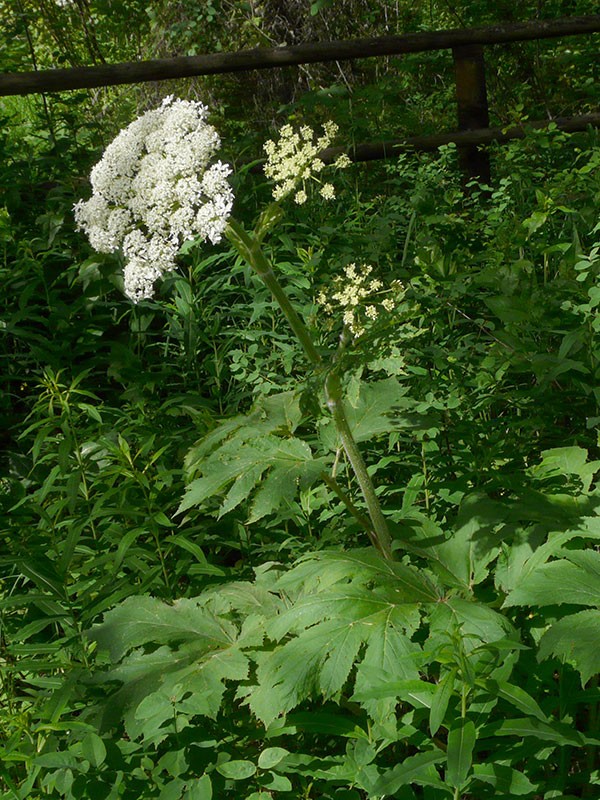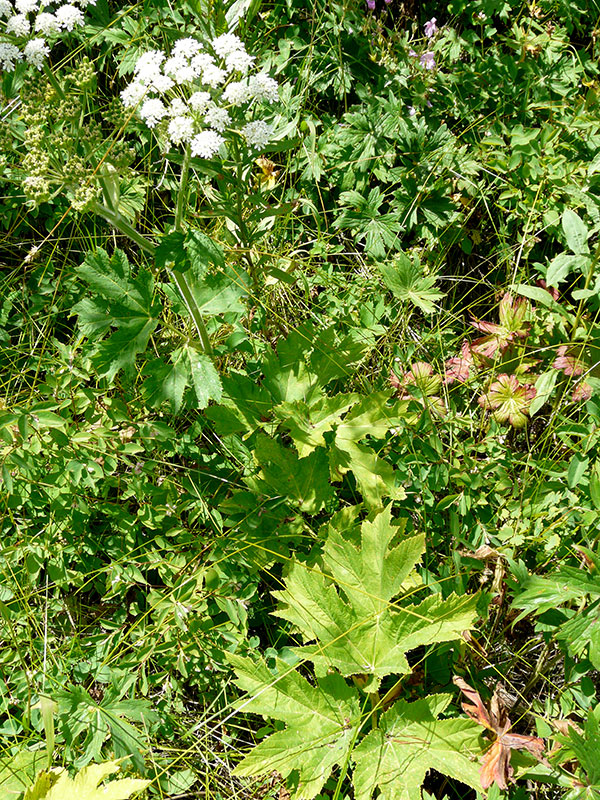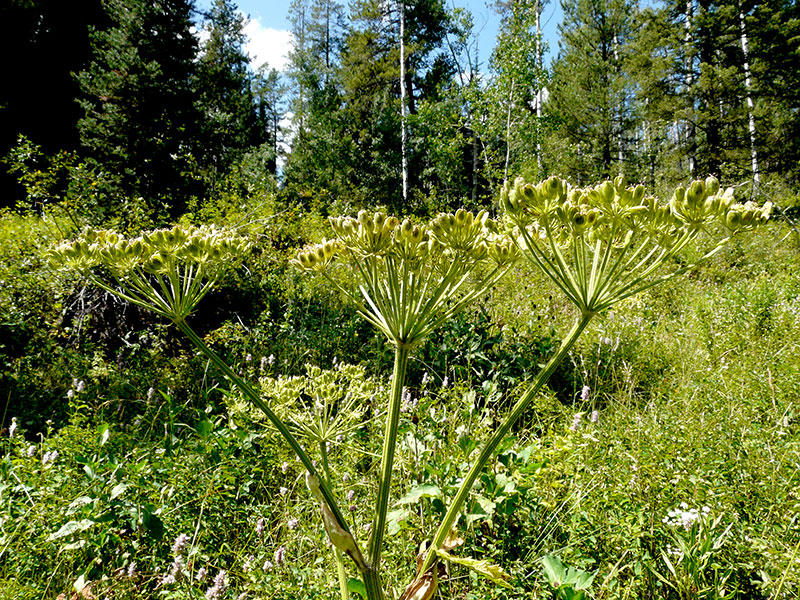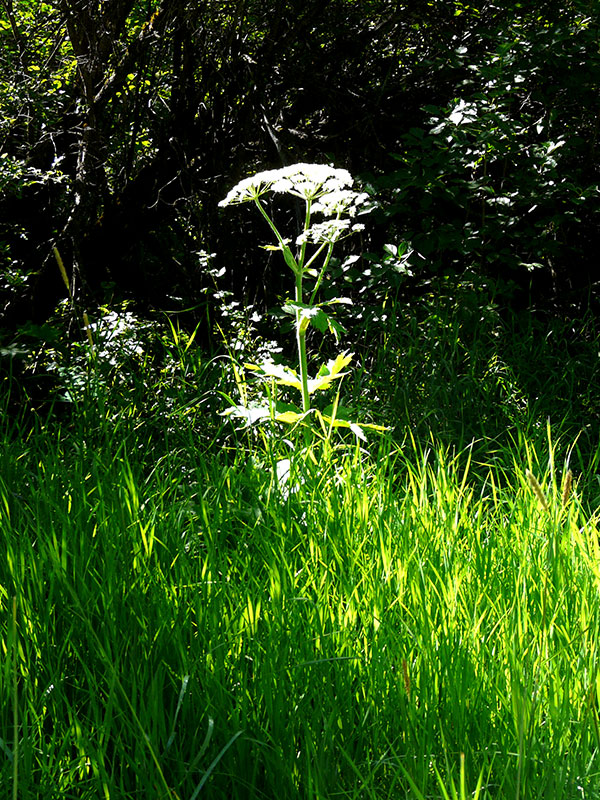Heracleum maximum / cow parsnip
- very tall – stands above most other herbs and forbs
- huge leaves with clasping sheaths at the stem junction
- leaves lobed and like a very large maple
- huge flat umbels with white flowers
- grooved, woolly, stout stem
Also known as: American cow-parsnip, Indian celery, Indian rhubarb, pushki
Synonym: Heracleum lanatum, H. sphondylium
See also: Angelica arguta / Lyall’s angelica
Cow parsnip is quite easy to see and identify because, for an herbaceous plant, it is huge! It grows 7 feet tall or more, and is the largest member of the carrot family native to North America. It is also the only native member of the family to be found from coast to coast. In addition to being tall, the leaves are huge and the umbel inflorescence is huge.
Cow parsnip is a perennial, growing from a stout taproot or a cluster of fibrous roots. Whether it can spread from these roots is, however, uncertain. Mostly, it spreads by seed.
The inflorescence of this species is a very large, compound umbel, growing up to 8″ across. The top is either rounded or flat. Like other members of the family, the individual flowers themselves are pretty teeny. In this case, they have 5 more or less notched petals. The outer flowers on the umbels may have much longer petals than those of the inner flowers as can be seen in the gallery photos. Some of the flowers are only male while some are hermaphroditic. Interestingly, herbivory (grazing) may increase both hermaphroditic flower production and seed production.
The pollinators include birds, butterflies, flies and possibly beetles.
Cow parsnip leaves are also huge – up to 16″ across and with deep lobes, giving them the look of a very large maple leaf. At the stem junction, the petioles enlarge to clasping sheaths.
The fruit is oval and flattened with broad wings, also seen nicely in the gallery photos. When they dry, they separate into two, back-to-back, flattened seeds, up to a half-inch long. The seeds don’t germinate until the year following production (meaning they need at least a cool, if not cold, wet spell); they remain viable in the seed bank for only a few years but are the major mode of reproduction.
Interestingly, cow parsnip flowers are considered fragrant, the leaves purportedly smell foul, and the seeds (when squeezed) smell like parsley.
Cow parsnip is found in moist places, both wooded and open. Look in riparian zones or wet meadows, often in the same habitats as red osier dogwood.
Despite its close relationship to a number of extremely toxic species, cow parsnip is considered edible; peeled stems are reported to taste like celery. Testing this, however, can be a dangerous gamble if you aren’t 100% sure you have the right plant ID. Even if you do get it right, the outer stem layers are toxic.
Nevertheless, not all mammals are ill-affected, and cow parsnip is a valuable pasture plant for livestock. Overgrazing can rapidly eliminate it, however. Similarly, it is important in the diets of deer, elk, moose and bears and a variety of smaller critters. In one study of grizzlies in Glacier National Park, regardless of the season, cow parsnip accounted for 15% of their diet (by weight).
The sap of this plant also contains furanocoumarins which can produce a nasty skin rash, phytophotodermatitis, especially when sun exposure accompanies sap exposure (i.e. they are photosensitized by UV). If you decide to handle cow parsnip, wear gloves, keep the sap off your skin and away from your face, and wash thoroughly afterwards. If possible do all this on a cloudy day.
| Color | |
|---|---|
| Family | |
| Blossom size | |
| Inflorescence size | |
| Inflorescence type | |
| When? | |
| Where? | forest gaps and roadsides, meadows, moist meadows, riparian, stream banks, wet(ter) meadows |




